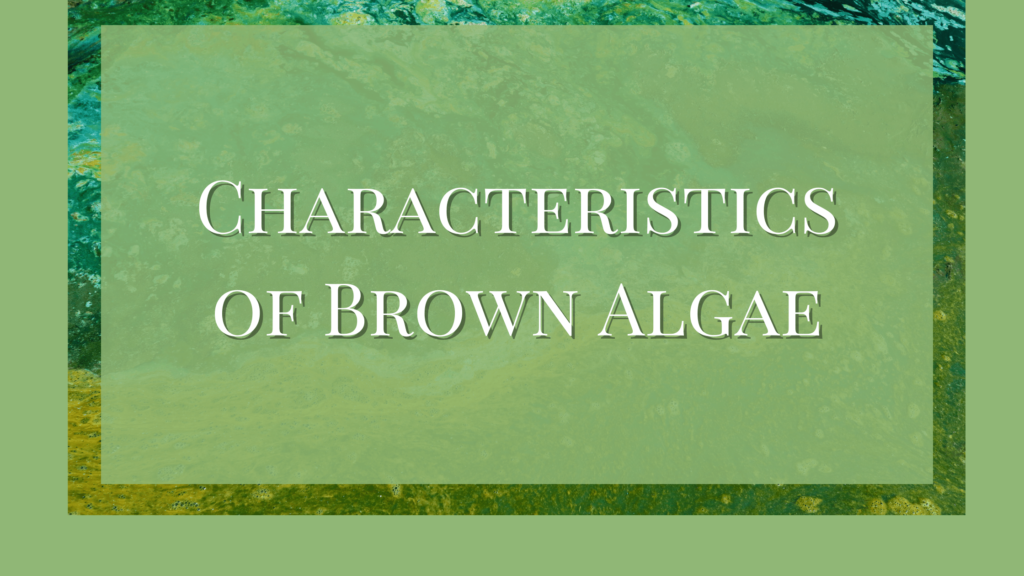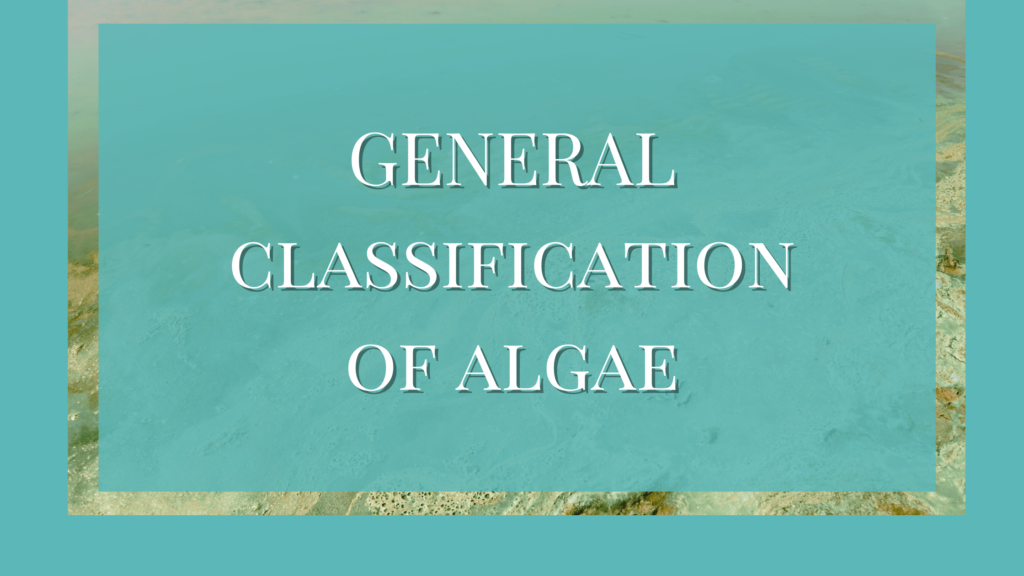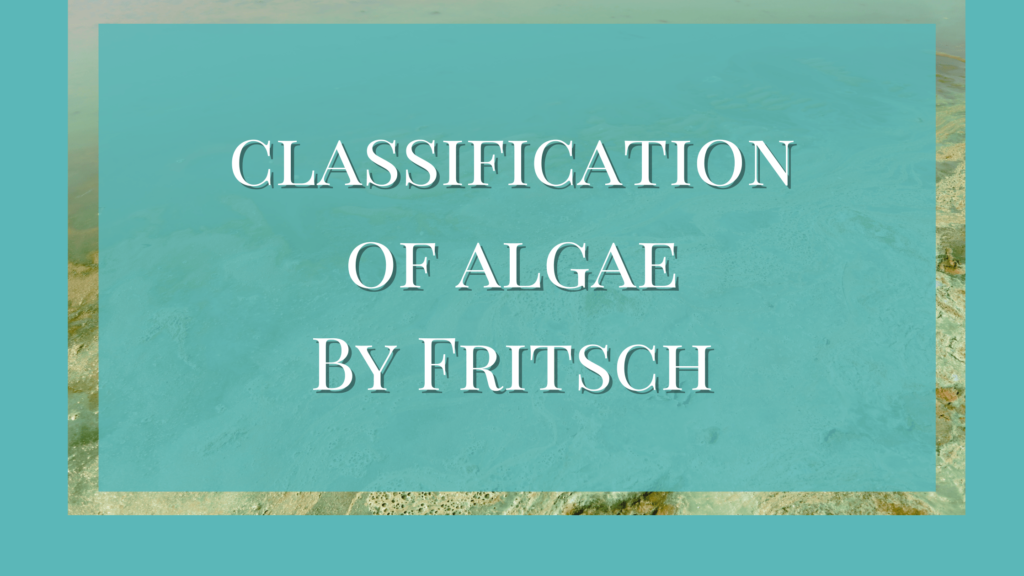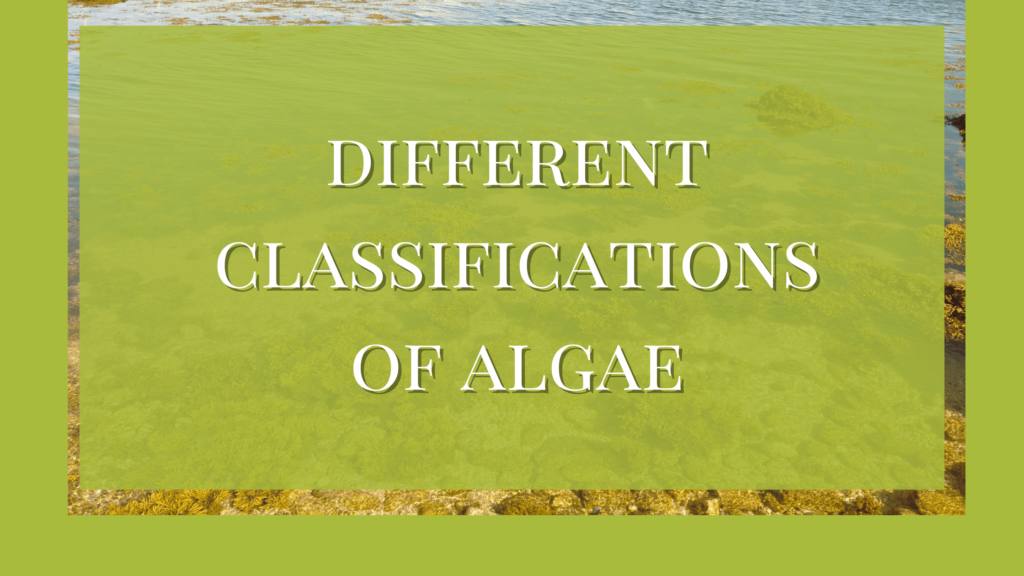Phaeophyta is the division that includes brown algae. They are distinguished from other algae by several characteristic features. They are mostly large and multicellular forms but certain microfilamentous algae are also seen among them.
Characteristics of Brown Algae
- The photosynthetic pigments in brown algae include chlorophylls a and c, along with their characteristic pigments xanthophylls. Xanthophylls include fucoxanthin, violaxanthin, and beta-carotene. In addition, occasional traces of diatoxanthin and diadinoxanthin are also seen.
- The reserve food products in brown algae include laminarian (also in Chrysophyceae and Euglenophyceae) and mannitol. Sucrose and glycerol also occur in some algae.
- Cell walls contain alginic acid and fucoidin (sulfated polysaccharide).
- The motile stages have a distinctive appearance. They are pear-shaped with two flagella (one acronematic and one pantonematic) arising from the side of the cell.
- The morphological characteristics of brown algae are more complex than any other class of algae. For example, the heterotrichous habit is the simplest type in Phaeophyceae. The thallus ranges from microscopic epiphytes to the largest Macrocystis which reaches 60 cm or more in length.
Distribution of Brown Algae
They are almost exclusively marine except for five genera which are freshwater types. Eg. Heribaudiella, Pseudobodiella, Sphacelaria leurocladia sp, Lithoderma.
Thallus Organization of Brown Algae
The characteristics of brown algae regarding their thallus organization are different in different orders and genera.
- Heterotrichous habit: the simplest form showing prostrate and erect system, (Ectocarpales and Chordariales).
- Haplostichous habit is formed by loose collections of branched filaments held together by mucilage as amorphous masses (Laethesia and Chordariales).
- Multiaxial branching system found in Cladosiphon.
- Pseudoparenchymatous crust formed by aggregation of filaments to form a pseudoparenchymatous prostate crust as in Ralfsia.
- Erect, branched axis from a prostate crust as in Analipus.
- Blades- Desmarestia.
- Polystichous, parenchymatous: Cells divide into several planes to give rise to a parenchymatous tissue (Dictyosiphonales and Scytosiphon)
- Polystichous unbranched: Myriotricha
- Solid blades Ountaria and Dictyotales
- Massive thalli with the degree of differentiation: Laminariales and Fucales.
Cell Wall
- The cell wall is composed of two layers. The skeleton is made up of cellulose while its amorphous component is made up of alginic acid and fucoidin. The mucilage and cuticle are composed of alginic acid.
- Alginic acid is formed of beta-1.4 linked mannuronic acid units having a variable amount of galaronic acid units attached through C-1 and C-4 linkages.
- Fucoidin is made of alpha-1,2 linked sulfated fucose units with a small amount of alpha-1,4 linked sulfated fucose units.
- Calcification of the cell wall occurs only in some Padina sp.
- The parenchymatous algae in Phaeophyceae have plasmodesmata or pores in the cell wall so the protoplasm continues from one cell to the next.
Chloroplast
- One of the main distinguishing characteristics of brown algae is the presence of chloroplast that has four membranes.
- Chloroplast may be single, few, or many per cell. They may be discoid, plate-like, or ramified. In Bachelotia, they are arranged in a stellate manner.
- Photosynthetic lamellae are composed of three thylakoids with some interconnections running between the lamellae. Girdle lamellae lie within the chloroplast envelope.
- The outer nuclear membrane invaginates and extends to encompass the chloroplast (CER- Chloroplast Endoplasmic Reticulum) and pyrenoid.
- Pyrenoids in brown algae are of the single-stalked type in that they project outward from the chloroplast but yet they are continuous with the chloroplast matrix.
- In advanced orders such as Dictyotales, Sphacelariales, Laminariales, and Fucales, the pyrenoids are absent.
Growth Pattern
There are six different patterns of growth observed in Phaeophyceae.
- Diffuse: Most parts of the thallus are capable of cell division and the active dividing zone can not be localized to any particular region of the thallus.
- Apical: A single cell at the apex gives rise to the thallus below.
- Trichothallic: A cell divides to form hairs above and thallus below.
- Promeristem: A non-dividing apical cell controls a large number of small dividing pro meristematic cells that lie beneath it.
- Intercalary: Growth occurs through an intercalary meristem producing tissues above and below.
- Meristoderm: Growth through epidermal cells that retain the ability to divide. These cells contribute to radial and vertical development as well. These forms usually also have an apical meristem.
Some Phaeophyceae members have division of daughter cells without subsequent enlargement to give a polysiphonous-like structure (Sphacelaria). Daughter cells can form laterals or branches that branch in a distichous manner.
Reproduction in Brown Algae
The reproductive characteristics of brown algae show three types. Most members of Phaeophyceae exhibit a unique type from the three types of reproduction: vegetative, asexual, and sexual.
Vegetative Reproduction
Vegetative reproduction is mainly through fragmentation and propagula formation.
Fragmentation
- This is the most common type of vegetative reproduction in brown algae.
- Here, a small fragment or a portion of thallus breaks away from the parent plant and develops into a new individual. Eg. Sargassum.
- In Sargassum, the free-floating thallus gets detached into small fragments which grow into new thallus.
- In another type of brown lage, the entire thallus gets split, longitudinally into multiple fragments and each forms a new thallus.
Propagula
- Propagules or propagula are special adventitious branches. It is commonly seen in Sphacelaria, where multicellular propagules are formed.
- They arise as normal outgrowths which will be wedge-shaped or radiate.
- They could be long or short.
- The apical cells of propagules undergo vertical division to produce bi or triradiate forms.
- These propagules get detached and grow into new plants.
Asexual Reproductive Characteristics of Brown Algae
- Asexual reproduction in phaeophyta is through spore formation.
- All members except those in Fucales produce zoospores or aplanospores.
- Ectocarpales and Sphacelariales produce motile zoospores through mitosis.
- These are produced in special structures called zoosporangia, a diploid sporophyte.
- A typical motile cell is somewhat asymmetric in shape, slightly reinformed with two dimorphic flagella inserted laterally or sub-apically.
Motile Zoospores
- A typical motile cell is somewhat asymmetric in shape, slightly reinformed with two dimorphic flagella inserted laterally or aub-apically.
- The anterior (forward-directed flagellum) is long and of tinsel type (covered with mastigonemes).
- The basally directed flagellum is relatively short and smooth.
- The anterior (forward-directed flagellum) is long and tinsel-type (covered with mastigonemes).
- The basally directed flagellum is relatively short and smooth.
- The zoospores are formed in two types of sporangia ie, the plurilocular and unilocular.
Plurilocular
- This is multicellular and each cell produces a single motile cell.
- It is also called neutral sporangia and the divisions here are mitotic, thereby producing haploid swamers on haploid thallus and diploid swarmers on diploid thallus.
- This structure functions as a gametangium when present on a haploid thallus and functions as a sporangium on a diploid thallus.
- parthenogenetic development of gametes can also occur.
Unilocular
- These organs are found in diploid thalli and are the site of meiosis.
- Unilocular sporangia produce spores that become part of the sexual reproduction.
- They are also called meiozoospores as they are formed after meiosis.
- Following meiosis, the products may be released as 16/32/64 haploid meiozoospores or as 4/8 non-motile or aplanospores (in most Dictyotales).
- In Tilopteridales, a single quadrinucleate monospore is formed.
- These haploid spores germinate into a haploid plant body or gametangium.
Sexual Reproduction in Brown Algae
Sexual reproduction by the haploid plant happens in different ways.
- Isogamy
- Anisogamy
- Oogamy
Isogamy
Isogamy refers to the fusion of gametes or spores that are morphologically alike and are motile. Both the gametes are produced by plurilocular gametangia. The gametes fuse to form a diploid zygote. The gametes that fail to fuse will eventually disintegrate.
Anisogamy
Anisogamy refers to the condition where the fusing gametes are different- morphologically or physiologically.
Physiological Anisogamy
- Some gametes are morphologically similar but differ in their behaviour. This is also called physiological anisogamy.
- Here, one of the gametes becomes non-motile, specifically close to fertilization. This immobile gamete becomes the female gamete while the motile male gamete swims towards it.
- The male gametes attache to the female gamete using their
- flagellum to form the cluster or clump.
- Only one of the male gamete from this cluster will be able to fertilize the female gamete.
Morphological Anisogamy
In morphological anisogamy, the gametes are unequal in size but both could be motile. Eg. Cutleria. The smaller gamete becomes the male and the larger one forms the female gamete. They are allied microgamete and macrogamete respectively.
In most of the lower orders, isogamy or anisogamy (morphological or physiological) occurs. Isogamy is seen in Ectocarpales, Chordariales, and Dictyosiphonales while anisogamy in Sporochnales, Cutileriales, Sphacelariales and Scytosiphonales. The union of gametes results in the formation of a diploid zygote which, after a brief resting period, divides mitotically to produce a diploid thallus.
Oogamy
- The majority of brown algae exhibit oogamous type of sexual reproduction. Here, the male and female gametes are produced by antheridium and oogonium respectively.
- Oogonium is a single-celled structure that produces one ovum.
- This ova is discharged and the male gamete will come and fuse to form the zygote.
- In Laminariales, the ovum is still attached to the oogonium.
Isogamy is seen in Ectocarpales, Chordariales, and Dictyosiphonales while anisogamy occurs in Sporochnales, Cutileriales, Sphacelariales, and Scytosiphonales.
Meiospore Formation
- The union of gametes results in the formation of a diploid zygote.
- After a brief resting period, the zygote divides mitotically to produce a diploid thallus.
- The diploid thallus immediately germinate to develop sporophyte.
- This diploid thallus mainly has a unilocular sporangia.
- Its cells undergo meiotic division to form meiozoospores with flagella.
- These spores germinate to form the haploid thallus.
In Tilopteridales, Dictyotales, Laminariales, and Fucales, oogamy occurs. Male structures called antheridia are plurilocular (as in Dictyota) or unicellular (as in Laminaria). The sperm of Fucus has a proboscis-like process. The sperm of Dictyotales is uniflagellate with a single tinsel flagellum pointed in the anterior direction.
Systematic Position of Phaeophyceae
Papenfuss in 1955 recognized a single class. Christensen, 1962, 1964, and Sybil Parker have recognized one of the classes under the division Chromophyta. Dodge (1974) included this as a class under Chrysophyta.
Kylin recognized three classes (isogenerate, heterogenerate, and Cyclospora) based on the type of life cycle under the division Phaeophyta. The same was followed by Smith also.
Bold and Wynne recognized a single class with 13 orders.
| CLASS | TYPE | THALLUS | GROWTH | LIFE CYCLE |
| Ectocarpales | Isogamy | Heterotrichous | ||
| Ralfsiales | – | Pseudoparenchymatous | Isomorphic | |
| Chordariales | Isogamy | Pseudoparenchymatous | Heteromorphic | |
| Sporochnales | Anisogamy | Pseudoparenchymatous | Heteromorphic | |
| Desmerestiales | Oogamy | Pseudoparenchymatous | Heteromorphic | |
| Cutleriales | Anisogamy | Parenchymatous | Trichothallic | Isomorphic |
| Sphacelariales | Anisogamy | Parenchymatous | Apical | Isomorphic |
| Tilopteridales | Oogamy | Parenchymatous | Trichothallic | Isomorphic |
| Dictyotales | Oogamy | Parenchymatous | Apical | Isomorphic |
| Dictyosiphonales | Isogamy | Parenchymatous | – | – |
| Scytosiphonales | Anisogamy | Parenchymatous | – | – |
| Laminariales | Oogamy | Parenchymatous | – | – |
| Fucales | Oogamy | Parenchymatous | – | – |
Evolutionary Characteristics of Brown Algae
- Elimination of accessory reproduction (plurilocular sporangia) in sporophytes.
- Tendency to form sori of sporangia on the sporophyte (Sphacelariales, Dictyotales, and Laminariales).
- One of the significant characteristics of brown algae is its tendency towards anisogamy and finally to oogamy.
- The increasing haploid number of chromosomes (Ectocarpales- 8-12; Dictyosiphonales- 8-10 or 18-36; Sphacelariales and Dictyotales- 16; Cutleriales-24; Laminariales- 30; Fucales-32) is another evolutionary characteristic of brown algae.
Conclusion
Despite various research and findings about the nutrient content of brown algae, it is still underutilized as a source of food for humans. Kelp is already used in aquaculture in many parts of Asia. The various characteristics of brown algae hint at a promising future for research in this area.
References
- Yoon, H., Andersen, R., Boo, S., & Bhattacharya, D. (2008). Stramenopiles. Encyclopedia of Microbiology (Third Edition), 721-731. https://doi.org/10.1016/B978-012373944-5.00253-4
- Reboleira, J., Freitas, R., Pinteus, S., Silva, J., Alves, C., Pedrosa, R., & Bernardino, S. (2018). Brown Seaweeds. Nonvitamin and Nonmineral Nutritional Supplements, 171-176. https://doi.org/10.1016/B978-0-12-812491-8.00024-2
Additional Reading
- General Characters of Prochlorophyta
- Thallus Organization in Chlorophyta
- General Characteristics of Charophyta




